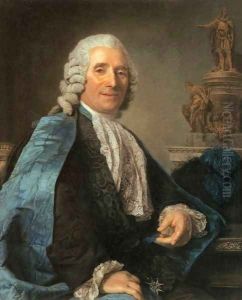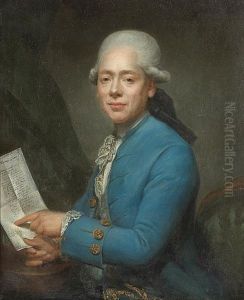Marie-Suzanne Roslin Paintings
Marie-Suzanne Roslin, born Marie-Suzanne Giroust in 1734, was a distinguished French painter during the 18th century. She is celebrated for her remarkable work as a pastelist and miniaturist, which has earned her a commendable position in the annals of French art history. Born in Paris, Giroust was the daughter of a jeweler to the royal court, which provided her an early exposure to the arts and the elite society of her time. Despite the early loss of both her parents, she was determined to pursue her passion for art, a field predominantly dominated by men during her era.
Marie-Suzanne was particularly known for her exquisite portraits, which were highly praised for their sensitivity and depth in capturing the essence of her subjects. Her marriage in 1759 to the Swedish portrait painter Alexander Roslin not only marked a personal union but also a professional collaboration that significantly influenced her artistic style and output. The couple became an integral part of the vibrant artistic community in Paris, frequently engaging with leading artists and intellectuals of their time.
Despite the societal constraints on women artists in the 18th century, Marie-Suzanne Roslin achieved considerable recognition and success in her lifetime. She became a member of the prestigious Académie Royale de Peinture et de Sculpture in 1770, an exceptional accomplishment for a woman at that time, which underscored her exceptional talent and the respect she commanded among her peers. Her works were exhibited in various salons, where they received critical acclaim for their technical proficiency and emotional depth.
Marie-Suzanne Roslin's contribution to the arts was cut short by her untimely death in 1772, at the age of 38. Despite her brief career, her legacy as a pioneering woman artist who broke through the gender barriers of her time continues to inspire and resonate with art historians and feminists alike. Her portraits, characterized by their delicate yet expressive execution, remain a testament to her skill and a valuable part of 18th-century French art history.

